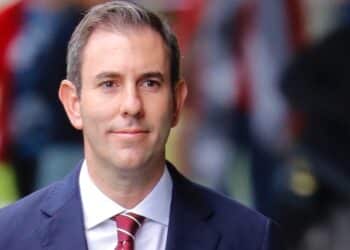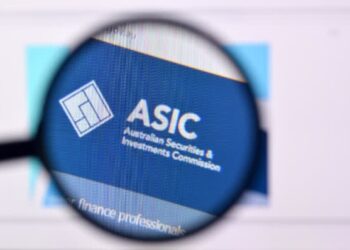Lifespan Financial Planning chief executive Eugene Ardino told ifa the FPA’s recent proposal to move to individual registration of advisers could be beneficial for dealer groups in allowing them to focus on being a service provider for practitioners, but was unlikely to have a significant impact on the cost of doing business for individual advisers.
“If you turned around and said ‘you don’t have to take responsibility for advisers anymore but you can service them and they’ll have another mechanism to be registered’, that doesn’t worry me too much – in some ways it would be a relief,” Mr Ardino said.
“The reality is if you remove licensees you are going to have to bring in some other layer of oversight. Those who say we’re a duplicate layer of oversight, I don’t think they understand the difference between how ASIC and licensees regulate – licensees resource and report at a much closer level to the advisers than ASIC do.”
Mr Ardino said the current monitoring requirements of licensees, which provided an essential second layer of supervision to the industry relied on by ASIC, would need to be replicated in any change of the current licensing structure.
“ASIC bans scores of people every year, but they’re trying to get to the really big problems that result in banning – licensees are doing it at a more detailed and closer level with a view to improving advice quality,” he said.
“That’s the regulatory side of it but that’s not the side of our business that is the most profitable or the most pleasurable, the side of the business that advisers would be inclined to want to pay for is the benefits we provide in terms of aggregation and services that are difficult to access.
“The other component of that is who takes liability if there are losses – as a licensee I would love a framework that put that responsibility on the individual adviser, it would make my life easier, but the reality is having that licensee there to be the first point of contact to meet that liability adds another level of protection for consumers.
“If the government is prepared to provide a limited liability scheme, great, but I don’t know in reality if that is going to work.”
Mr Ardino said such a change was unlikely to get to the root cause of rising costs in the industry, which were due to the time taken to produce a piece of advice.
“If you talk to enough advisers you’ll learn that to bring on a new client is somewhere between 20 and 40 hours if you go through the process properly, [so] the cost of advice is higher than what advisers are charging,” he said.
“As funding mechanisms such as commissions disappear and more difficulty surrounds ongoing fee arrangements, you will see what’s being charged start to get up to what it actually costs as advisers want to recover more time.
“You might be able to tweak the registration framework to make that a bit less onerous but that will give you a drop of 5 per cent – what we need is to drop the cost of advice by 30 per cent, and the only way to do that is to reduce the red tape involved in the provision of advice.”




This parade of licence heads stating platitudes in an attempt to justify their ticket-clipping existence is becoming hilarious.
I genuinely have no idea how these licensee heads can run around with their hands in the air, bemoaning the rising cost of advice as if they have nothing to do with it. Can they truly not see that the duplication foisted upon this industry by their mere existence is a key driver for these increases?
I am still yet to hear a compelling argument for the continued existence of this ludicrous licensing system.
There should be:
– One body to regulate financial advice, providing clear and consistent guidance on how we can all comply with the laws and regulations in place
– That body will be responsible for disciplinary action, removing the ‘need’ for the 7 different complaints mechanisms we have in this business
– No licensees. Literally, none. They serve no practical purpose, no matter how much they bleat about the ‘value’ they add.
Licensees should be terrified of having their mandate removed, because that will mean they’ll have to compete in an open marketplace things they’ve so far studiously avoided, like relevance, quality, skills and value.
Time for us to all grow up, step out from behind the aprons of our licensees and take back control of our own futures.
Bring it on.
The issue glossed over by most large licensees is that the costs and complexity of advice and supervision are inflated [b]because of[/b][b][/b][i][/i][i][/i] the involvement of that large licensee.
Licensees have to supervise lots of advisers who are not directly employed by them, and over whom they have limited day to day visibility. Consequently they need to put in place overly complex systems and processes to compensate for that lack of visibility and control. These systems and processes are generally one size fits all, tailored to the highest risk, lowest common denominator adviser. They are unnecessarily complex for the majority of lower risk advisers. And most licensees also have inhouse products which their advisers distribute, so they need additional complexity in their processes to defend against the higher regulatory requirements associated with inhouse products.
Remove large licensees and inhouse products from the equation and the whole advice and supervision model becomes much cheaper and simpler.
What makes an adviser “lower risk”?
it needs to go further than this.
the system should allow a person the authority for a person to act for someone else, like a tax agent, or an accountant, for that person to do simple admin tasks, like check that the employer is paying the employee their super money.
the system is silly if a person has to pay a financial adviser 000″s of dollars just to do simple admin tasks…!!
many people find centrelink documents and super process overwhelming, and they need an adviser to guide them through…but having to pay so much money for something that should be simple – that is wrong.
people are forced to deal with phone apps, and lot more, and a lot of people still don’t have NBN, and many people are not IT savy….all these people are going to be left behind because the current system does not accommodate these people. Paul Keating introduced a simple savings system for Australians, – >25 years on – its a nightmare.
Whilst I can see the benefit of the self-regulation proposal from the dealer group licensee perspective, there may also be a few for practitioners and consumers.
We have seen practitioners suddenly on the street when ASIC withdraws the license of the dealer group. The negative ramifications may also extent to clients should the IP issuer cancel the policy without any transition period. We have also seen IP premiums go up for the dealer group and its representatives on the basis of poor claim history caused by a few bad practitioners. Wouldn’t it be better that any ‘bad’ practitioners or dealer group principals are booted out without affecting those remaining?
Using a model similar to that of solicitors and accountants may not only reduce risk for dealer groups, practitioners and clients, it may also speed up the transformation of Financial Planning into a ‘public recognised’ profession.